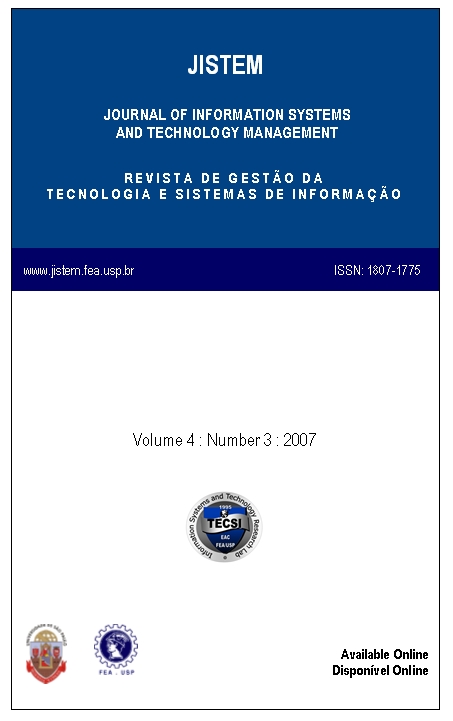The effects of internet shoppers' trust on their purchasing intention in China
DOI:
https://doi.org/10.4301/S1807-17752007000300001Keywords:
Internet shopping mall, purchasing intention, trust, e-commerce knowledge, reputation, risk, PEOUAbstract
Owing to the rapid development of the Internet and information technology in China, the growth of consumers' purchasing activities in Internet shopping malls has been truly phenomenal in recent years. Taobao.com, Ebay.com.cn, and Paipai.com have 67,360,000 customer to customer (C2C) users and 99% of the market share in China's C2C market (www.163.com). Dangdang.com and Joyo.com have occupied 87% of the business to customer (B2C) market with 58,360,000 users (www.sohu.com). Because of these significant numbers of users, it is important to understand what affects Chinese consumers' decisions to purchase in Internet shopping malls. Based on past studies, trust is considered a key factor affecting a Chinese consumer's purchasing intention. The purpose of this study is to investigate the effects of Chinese shoppers' trust on their purchasing intention in Internet shopping malls. In order to accomplish the purpose of this study, we developed a research model. This model suggests that there exists a significant relationship between trust and purchasing intention. According to this model, on purchasing intention, trust also mediates effects of other independent variables such as e-commerce knowledge, perceived reputation, perceived risk, and perceived ease of use. The results of this study show that the relationships between these variables are all significant except that between trust and perceived reputation. This research confirms the significant effects of Chinese shoppers' trust on purchasing intention. Implications of these findings are discussed for researchers and practitioners.Downloads
Download data is not yet available.
Downloads
Published
2007-01-01
Issue
Section
nd848065146
How to Cite
The effects of internet shoppers’ trust on their purchasing intention in China . (2007). Journal of Information Systems and Technology Management, 4(3), 269-286. https://doi.org/10.4301/S1807-17752007000300001



